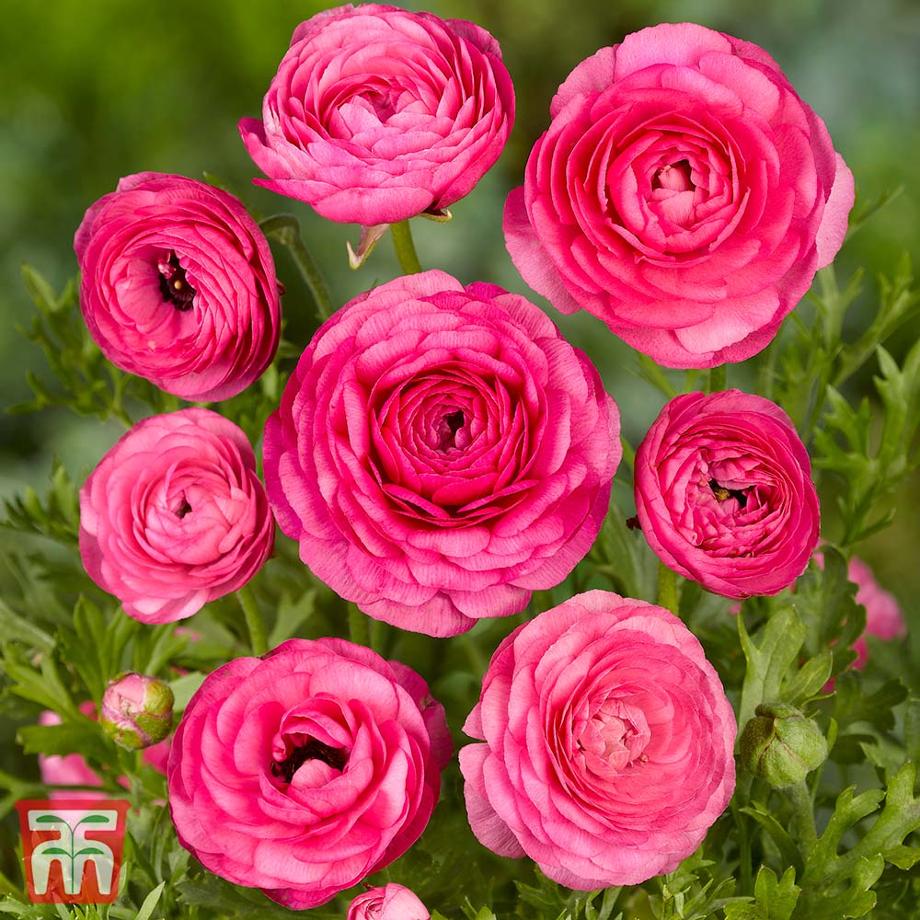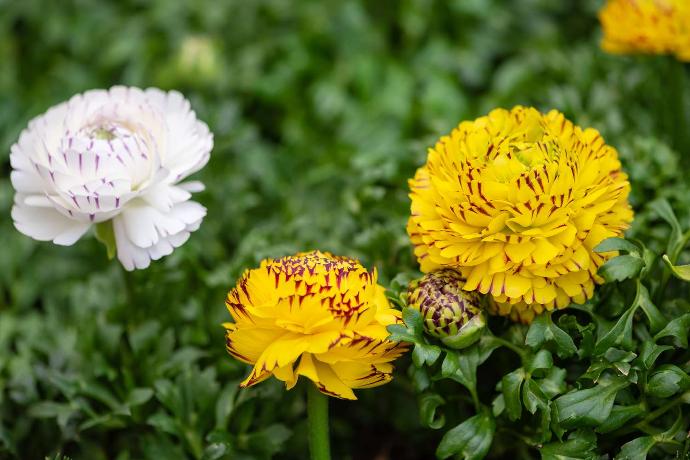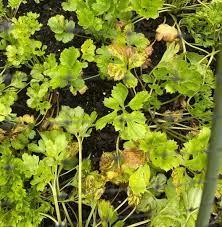Ranunculus Plant
Ranunculus (Ranunculus asiaticus) is a perennial that grows 1-2 ft tall, hardy in USDA Zones 8-10, prefers well-drained, rich soil, full sun, medium moisture, and has no edible or medicinal uses.

Habit
Clump-forming
Height
0.3 to 0.5 m
Growth
Perennial
Soil
Well-drained, Sandy Loam
Shade
Full Sun
Moisture
Moderate
Edible
No
Medicinal
No
Origin
Europe, Asia
Climatic Condition
Temperate, Subtropical
Temperature (°)
10°C to 20°C
Humidity (%)
50% to 70%
Potting media
50% Loam, 40% Sand, 10% Organic Matter
Fertilizers
Organic Fertilizer
Watering
Regular watering
Plant Weight
0.1 to 0.3 kg
Flowering Time
Spring to Summer
Soil Ph level
6.0 to 7.0
Water Ph level
6.0 to 7.0
Soil EC
0.5 to 0.8 mS/cm
Yield Per Plant
0.5 to 1.0 kg per plant
NPK ratio
10:10:10
life Span
1 to 2 years
Health Benefits
Ornamental, Medicinal
Suggested Grow Media or Potting Mix ?
50% peat, 25% compost, 25% sand
Suggested Fertigation/Fertilizers
Fertilize every 2-3 weeks with a balanced fertilizer.
Common Diseases and Remedies
Powdery Mildew, Root Rot, Gray Mold, Aphids, Leaf Spot.
White powdery growth on leaves, Wilting, yellowing leaves, root discoloration, Gray, fuzzy mold on leaves and flowers, Yellowing leaves, sticky residue on leaves, Brown or black spots on leaves
Neem oil, baking soda spray Improve soil drainage, use beneficial soil microbes, Improve air circulation, remove affected parts, Remove infected leaves, use compost tea spray
Sulfur-based fungicides, Fungicides with metalaxyl or mefenoxam, Iprodione or thiophanate-methyl, Insecticides containing imidacloprid, Copper-based fungicides.
HEALTH BENEFITS
· Some species have been used in folk medicine for skin conditions.
· Can be toxic if ingested raw.

